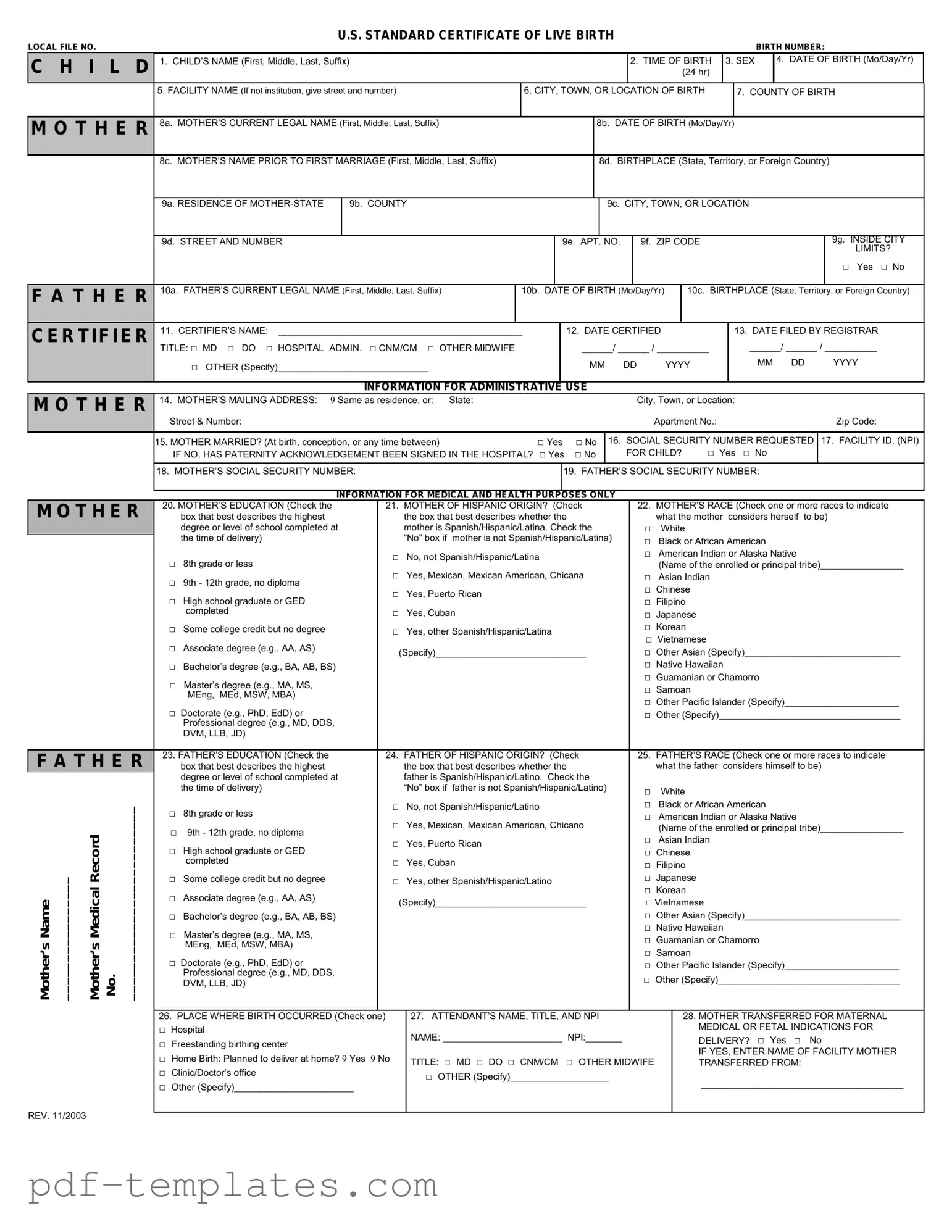The CDC U.S. Standard Certificate of Live Birth form is similar to the State Birth Certificate, which is issued by individual states. Both documents serve the primary purpose of officially recording the birth of an individual. They include essential information such as the baby's name, date of birth, place of birth, and parentage. However, state birth certificates may vary in format and specific requirements based on state laws, but they all fulfill the same fundamental role of establishing identity and citizenship.
Another document comparable to the Certificate of Live Birth is the Hospital Birth Record. This record is created at the time of birth by the hospital staff and includes details such as the time of birth, weight, and length of the newborn. While it is an important document for medical records, it is not typically used for legal identification. In contrast, the CDC form is a legal document that is often required for obtaining a state birth certificate.
The Certificate of Live Birth is also akin to the Adoption Certificate. This document is issued when a child is legally adopted and includes the child's new name, the names of the adoptive parents, and the date of the adoption. Both documents serve to establish legal identity and family relationships, but the adoption certificate specifically addresses the change in parental rights and responsibilities, while the birth certificate records the original birth information.
Additionally, the Social Security Card can be compared to the Certificate of Live Birth. The Social Security Card is essential for identification and benefits in the U.S. It often requires a birth certificate for issuance, as it verifies the individual's identity and age. Both documents are crucial for accessing government services and benefits, but they serve different functions in terms of identification and legal status.
Lastly, the Passport Application Form shares similarities with the Certificate of Live Birth. When applying for a passport, proof of citizenship is required, and the birth certificate is commonly used for this purpose. Both documents establish identity and citizenship, but the passport application is specifically for international travel, while the birth certificate is a foundational document for various legal processes within the U.S.
